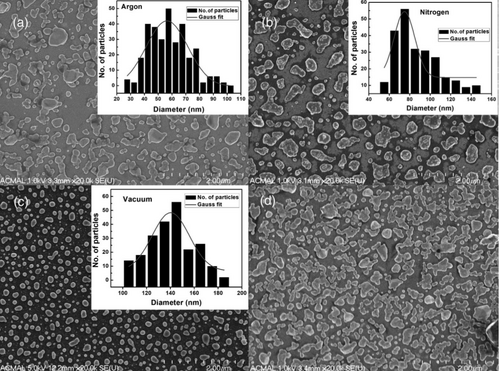J.M.Pearce (talk | contribs) m (→See Also) |
J.M.Pearce (talk | contribs) m (→See Also) |
||
| Line 31: | Line 31: | ||
* [[MACE nano-texture process applicable for both single- and multi-crystalline diamond-wire sawn Si solar cells]] | * [[MACE nano-texture process applicable for both single- and multi-crystalline diamond-wire sawn Si solar cells]] | ||
* [[Scalable honeycomb top contact to increase the light absorption and reduce the series resistance of thin film solar cells]] | * [[Scalable honeycomb top contact to increase the light absorption and reduce the series resistance of thin film solar cells]] | ||
* [[Influence of metal assisted chemical etching time period on mesoporous structure in as-cut upgraded metallurgical grade silicon for solar cell application]] | |||
Revision as of 14:45, 9 April 2019

Source
- Jephias Gwamuri, Ragavendran Venkatesan, Mehdi Sadatdol, Jeyanthinath Mayandi , Durdu O. Guney, Joshua M. Pearce, Ambient-dependent Agglomeration and Surface-Enhanced Raman Spectroscopy Response of Self-Assembled Silver Nano-particles for Plasmonic Photovoltaic Devices, Journal of Photonics for Energy 7(3), 037002 (2017), doi: 10.1117/1.JPE.7.037002 open access
Abstract
The agglomeration/dewetting process of thin silver films provides a scalable method of obtaining self-assembled nanoparticles (SANPs) for plasmonics based thin-film solar photovoltaic (PV) devices. Here, we show the effect of annealing ambiance on silver SANP average size, particle/cluster finite shape, substrate area coverage/particle distribution and how these physical parameters influence optical properties and surface-enhanced Raman scattering (SERS) responses of SANPs. Statistical analysis performed indicates that generally Ag SANPs processed in the presence of a gas (Argon and Nitrogen) ambiance tend to have smaller average size particles compared to those processed under vacuum. Optical properties are observed to be highly dependent on particle size, separation distance as well as finite shape. The greatest SERS enhancement was observed for the argon processed samples. There is a correlation between simulation and experimental data that indicate argon processed AgNPs have a great potential to enhance light coupling when integrated to thin-film PV.
Keywords
Photovoltaics (PV), Raman scattering, Plasmonics, Agglomeration, Self-assembly, Thin-film PV, Optical properties.
See Also
- A new method of preparing highly conductive ultra-thin indium tin oxide for plasmonic-enhanced thin film solar photovoltaic devices
- Influence of Oxygen Concentration on the Performance of Ultra-Thin RF Magnetron Sputter Deposited Indium Tin Oxide Films as a Top Electrode for Photovoltaic Devices
- Limitations of ultra-thin transparent conducting oxides for integration into plasmonic-enhanced thin-film solar photovoltaic devices
- Advances in plasmonic light trapping in thin-film solar photovoltaic devices
- Controlling optical absorption in metamaterial absorbers for plasmonic solar cells
- Plasmonic Perfect Meta-Absobers for a-Si PV Devices
- Plasmonic enhancement of amorphous silicon solar photovoltaic cells with hexagonal silver arrays made with nanosphere lithography
- Optical modelling of thin film microstructures literature review
- Multi-resonant silver nano-disk patterned thin film hydrogenated amorphous silicon solar cells for Staebler-Wronski effect compensation
- Effect of ambient combinations of argon, oxygen, and hydrogen on the properties of DC magnetron sputtered indium tin oxide films
- A novel synthesis of tin oxide thin films by the sol-gel process for optoelectronic applications
- Enhancement of hydrogenated amorphous silicon solar cells with front-surface hexagonal plasmonic arrays from nanoscale lithography
- Fabricating Ordered 2-D Nano-Structured Arrays Using Nanosphere Lithography
- Micromorphology analysis of sputtered indium tin oxide fabricated with variable ambient combinations
- Optimal Design of Thin-film Plasmonic Solar Cells using Differential Evolution Optimization Algorithms
- MACE nano-texture process applicable for both single- and multi-crystalline diamond-wire sawn Si solar cells
- Scalable honeycomb top contact to increase the light absorption and reduce the series resistance of thin film solar cells
- Influence of metal assisted chemical etching time period on mesoporous structure in as-cut upgraded metallurgical grade silicon for solar cell application





